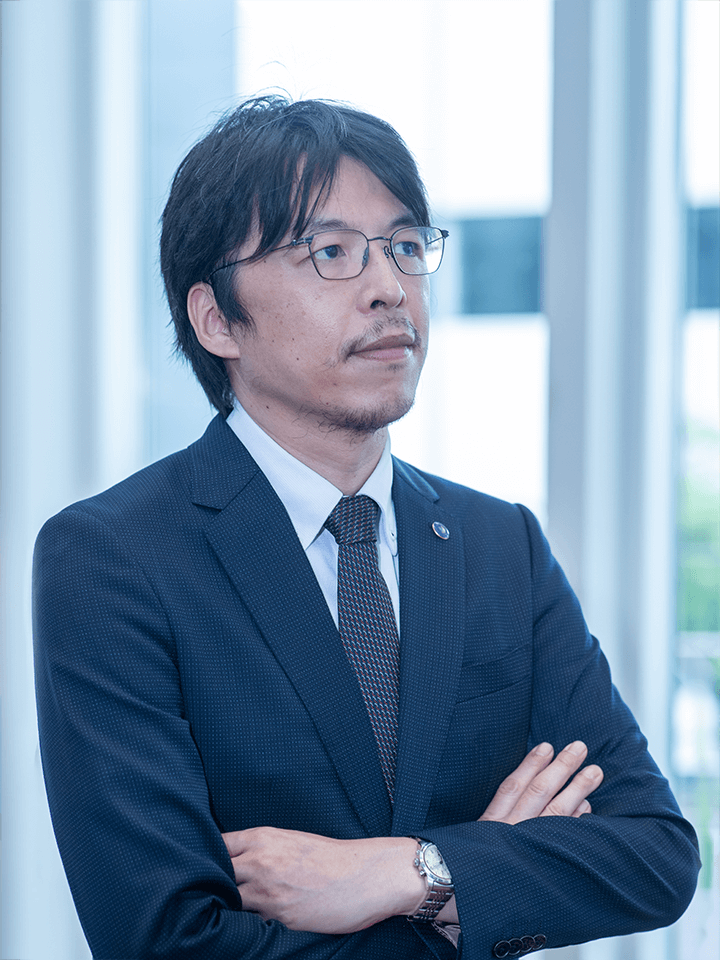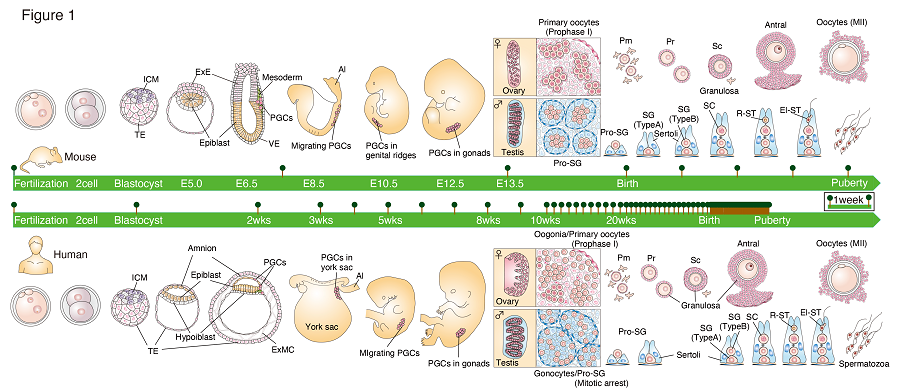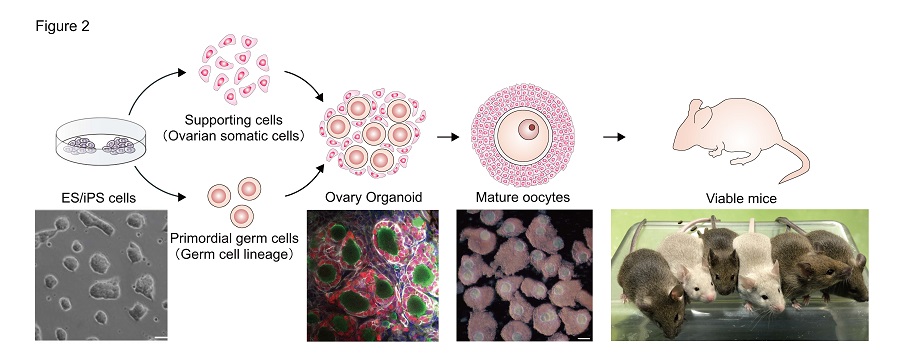Germline Genetics
- Understanding how the quality of inheritable information in the germ cell lineage is maintained
- Elucidating the different mechanisms underlying anisogametogenesis
- Elucidating the mechanism for sustainable oogenesis in the ovaries
- New technology that models the differentiation of germ cell lineages

Using a unique multicellular reconstitution system to study the mechanisms of germ cell development
Germline differentiation consists of several steps (Fig. 1). There are two distinguishing features of the germline lineage. First is its cyclic nature: differentiated gametes will return to the first stage of fertilization. Second is that the cells develop differently depending on the sex. To elucidate the mechanisms responsible for these features, we are conducting the following research.
a) Studying the mechanisms responsible for the long-term production of oocytes
Oocytes in the ovaries do not increase after birth. Instead, the vast majority of oocytes stays dormant and only some of them periodically get matured, allowing constant production of fertile oocytes during the female reproductive period. Thus, the dormant state is critical for the establishment, maintenance and termination of oocyte production. Furthermore, oocytes in the dormant state strictly maintain inheritable information, such as the genome, epigenome and mitochondria. We aim to clarify the mechanism responsible for the dormant state. This information will provide new understanding on how oocyte production is controlled for quality and quantity.
b) Elucidating the gene network responsible for sex differences in germ cells
The morphology and function of germ cell lineages depend on the sex. For example, oocytes are much larger than their motile counterpart, sperm. Notably, oocytes and sperm are derived from the same precursor, called primordial germ cells that have no difference in morphology and gene expression between the sex. Sex determination of the germ cell lineage relies on interaction with gonadal somatic cells. We aim to elucidate the interactions providing sex-dependent gametogenesis (anisogametogenesis), which is in principle conserved across mammalian species. We expect this study will clarify causes of abnormal gametogenesis in patients with a disorder of sex development.
c) A multicellular reconstitution system for germ cell development
We are using an in vitro culture system using pluripotent stem cells (ES and iPS cells) to model germ cell development. We are the first group to have successfully reconstituted the oocyte lineage and the follicular somatic cell lineage, allowing us to produce functional oocytes from pluripotent stem cells without a need of embryonic tissue (Fig. 2). This culture system is a unique tool to investigate mechanisms of oocyte development including interactions with surrounding somatic cells. The system is now being applied to answering the above two research questions as well as develop germ cells from pluripotent cells in other species including humans.










